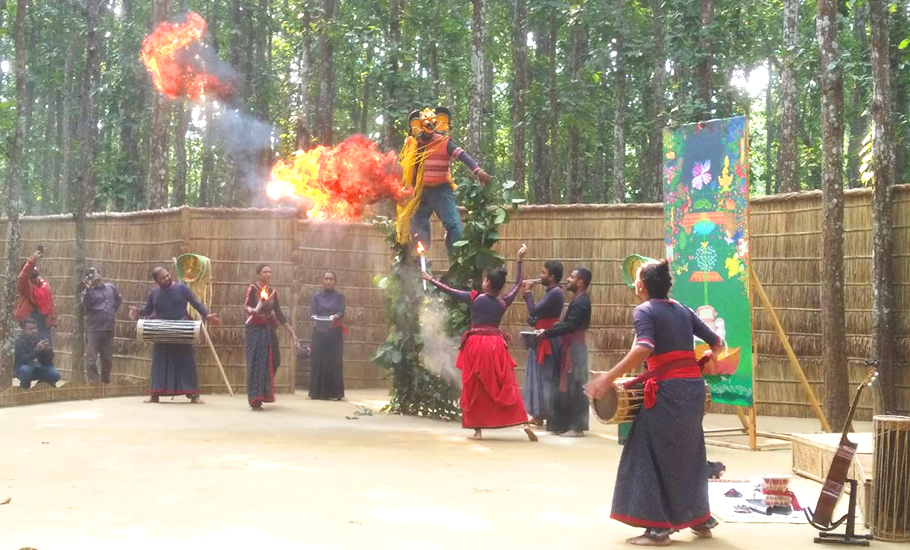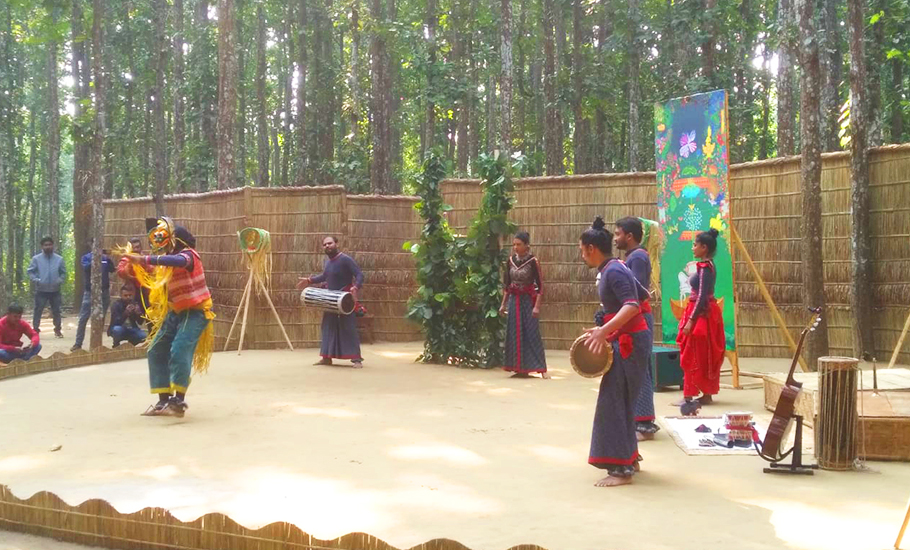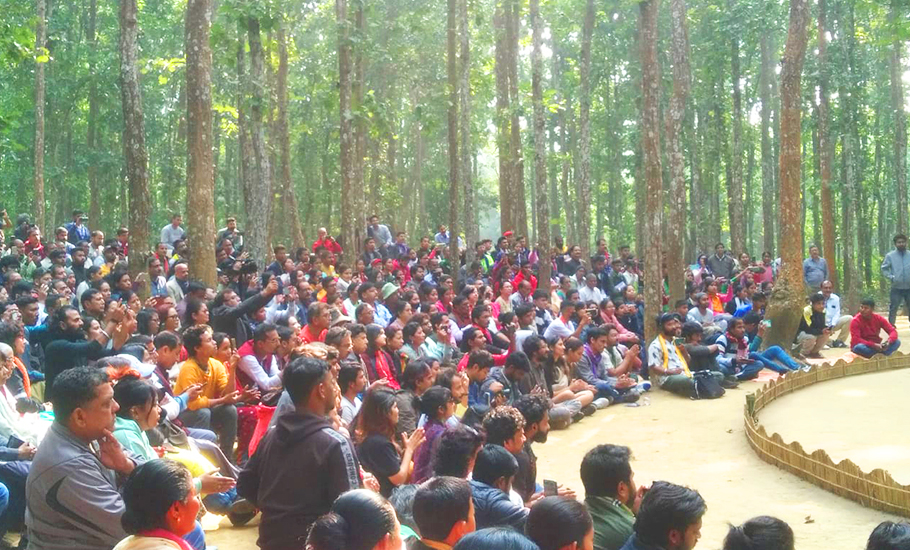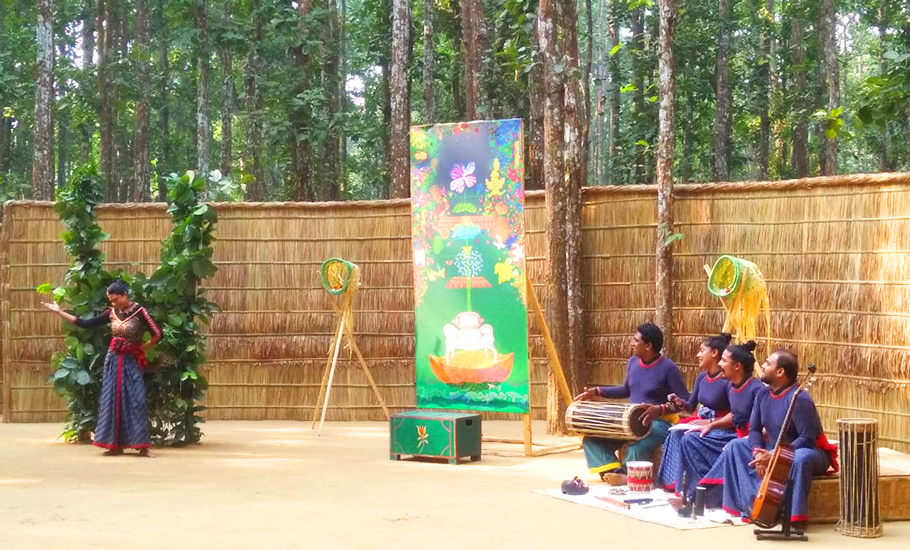
- Home
- India
- World
- Premium
- THE FEDERAL SPECIAL
- Analysis
- States
- Perspective
- Videos
- Sports
- Education
- Entertainment
- Elections
- Features
- Health
- Business
- Series
- In memoriam: Sheikh Mujibur Rahman
- Bishnoi's Men
- NEET TANGLE
- Economy Series
- Earth Day
- Kashmir’s Frozen Turbulence
- India@75
- The legend of Ramjanmabhoomi
- Liberalisation@30
- How to tame a dragon
- Celebrating biodiversity
- Farm Matters
- 50 days of solitude
- Bringing Migrants Home
- Budget 2020
- Jharkhand Votes
- The Federal Investigates
- The Federal Impact
- Vanishing Sand
- Gandhi @ 150
- Andhra Today
- Field report
- Operation Gulmarg
- Pandemic @1 Mn in India
- The Federal Year-End
- The Zero Year
- Science
- Brand studio
- Newsletter
- Elections 2024
- Events
- Home
- IndiaIndia
- World
- Analysis
- StatesStates
- PerspectivePerspective
- VideosVideos
- Sports
- Education
- Entertainment
- ElectionsElections
- Features
- Health
- BusinessBusiness
- Premium
- Loading...
Premium - Events

How Sri Lanka held Assam captive Under the Sal Tree

Sal trees off Rampur village’s main road in Goalpara district of Assam stand tall. Some rise up to 40 metres (180 feet), appearing to be piercing through the skies. The leaves and bark of sal trees are known to heal umpteen ailments, including leprosy, wounds, ulcers, cough, headaches and diarrhoea. But in Goalpara’s Rampur village, about 200 kilometres from the busy and bustling city...
Sal trees off Rampur village’s main road in Goalpara district of Assam stand tall. Some rise up to 40 metres (180 feet), appearing to be piercing through the skies. The leaves and bark of sal trees are known to heal umpteen ailments, including leprosy, wounds, ulcers, cough, headaches and diarrhoea. But in Goalpara’s Rampur village, about 200 kilometres from the busy and bustling city of Guwahati, the trees turn into an open auditorium every year for three-four days in the winter month of December.
This December, however, the ‘world’s most natural auditorium’ was witness to the socio-political churning in Sri Lanka, a country that has seen decades of civil war, and more recently suffered due to Covid restrictions that brought the country’s bustling tourism sector to its knees and led to an unprecedented economic crisis. Telling the sordid story through song and dance were eight artistes, part of Salt Theatre Company, from the island nation, over 2,800 km away from Assam by air.
Staged on December 16, My Sweet Rotten Heritance, the Sri Lankan play became the highlight of the 13th edition of the ‘Under the Sal Tree’ festival, which is an Assam tribe’s resolve to preserve customs in the lap of nature.
By weaving together politics, history and mythology, and reinterpreting it in today’s context, My Sweet Rotten Heritance made the act contextual. The beauty of the satirical play lay in the fact that the messaging found resonance with the audience in Assam since it also echoed problems faced by the people in the state as also people everywhere in the world. Language may be a barrier for communication elsewhere, but in Goalpara’s Rampur, the audience watched the play fully captivated for nearly 2 hours and 30 minutes.
“The drama was in the form of a Sri Lankan traditional dance-theatre form Kolam,” said Anasuya Subasinghe, who directed the play and is a Sri Lankan academic specialising in performance studies.

Kolam is a traditional dance drama practised in rural Sri Lanka and refers to disguise and mimicry. The actors in kolam wear masks and perform with mime, dance and dialogue. While a loose plot generally binds the many characters and scenes together in kolam, the actual play is usually based on a Buddhist Jataka story. Kolam dramas basically present stories in which the past meets the present and all meetings are bitter-sweet in nature.
“Kolam has always been used in theatre to critically examine the Sri Lankan society. It highlights the strength of traditions in representing the condition of the society at any given time. The fact that we could use it even in 2022 to tell the story of the present speaks about the strength of this traditional art form,” Anasuya told The Federal.
My Sweet Rotten Heritance involved several characters such as Lǣli Kōlama, a man bearing a plank of wood, trying to cross the ocean to arrive on foreign shores with the hope of becoming a deity, Diyasēna Kōlama. Diyasēna is a self-anointed saviour with a master plan to outplay the evil forces threatening his race and religion. It also has Attamma Kōlama, who endures the burdens and fears of the archetypal Sri Lankan grandmother; and Vanda Kōlama, has a habit of genuflection. And Gandhabba Kōlama, who wanders between death and rebirth, seeking justice for those who have disappeared through the troublesome history of the Island.
That the audience fully enjoyed the show is reflected in the silence in which they watched the show making an effort to understand its many layers, nodding, smiling, at times laughing and other times wiping away drops of tears from the corners of their eyes.
“Midway through the drama’s performance, there was a break for about 15 minutes and not even one spectator left the venue, and this shows how the drama artists could keep the Assamese audience totally engaged,” said veteran Assamese filmmaker Sanjeev Hazarika, who is a patron of the theatre festival.
“The drama made a bold statement and that added to its appeal with the audience,” said Hazarika.
Hazarika said that even though it is not the same, Assam’s Ojapali, believed to be one of the oldest art forms of the state, is similar to Kolam.
Underlining the cultural similarity of Assamese and Sri Lankan drama form, Hazarika said,
“In Assam, also we have a similar tradition called ‘Ojapali’ – which involves three forms, song, dance and drama for storytelling. There are other such folk traditions as well which are slowly moving towards oblivescence.”

He voiced his worry over the lack of political satire in Assamese drama saying it is very essential for a vibrant society.
“We have had very few such works in Assamese drama, we need more such work and I hope this Sri Lankan drama inspires few,” Hazarika said.
Apart from My Sweet Rotten Heritance, a total of six dramas were staged during the three-day event. The plays included ‘Rishi Jolongka’ in Rabha language, ‘Alor Gaan’ in Bengali and Marathi, ‘Atho Hidimba Kotha’ in Bengali, ‘Erindira’s Metamorphosis’ in Assamese, ‘Jhalkari’ in Hindi and ‘Pancho Na Vesh’ in Gujarati.
A unique art movement
Under the Sal Tree, now a highly popular annual and acclaimed theatre festival, was started way back in 2008 by late Sukracharjya Rabha, a visionary theatre practitioner, on a small patch of land in the midst of the sal forest. The event is organised by the Badungduppa theatre group, a troupe of local artists known for their talent to use art to entertain and convey important social and political messages.
This isn’t the first time an overseas group has participated. In previous editions, theatre groups from South Korea, Brazil, Poland and neighbouring Bangladesh have also participated and performed their plays in the festival.
What makes the experience of this theatre unique is that it is performed under open skies with no modern equipment like lights or mikes for sound amplification. There are no instruments to add to the audio effect apart from those indigenously made. Interestingly, the sal forest doesn’t just act as a natural auditorium but also acts as a natural receptacle for trapping the sound. Only bamboo, straws and mud are used to set up the stage and the sitting arena for the audience.
The audience seem to love the uniqueness of the setting.
“There is not even an iota of feeling of aristocracy in the event. The ambience and the natural stage make the spectators feel that the actors, however renowned they might be, are just like them. This is one reason why the discussions held at the end of the day are very engaging and lively,” said Bhuban Kalita, a 32-year-old theatre lover from Guwahati city, who has been visiting the theatre festival every year since the past decade.
Post Rabba’s demise in 2018, the legacy has been carried forward by his associates.
Drawing satisfaction at the enthusiasm displayed by the spectators, Madan Rabha, the managing director of the festival, who is also a prominent theatre personality, said, “With the love and affection showed by theatre lovers, the festival will be able to present some of the best plays in the unique venue over the coming years.”

The theatre festival carries a larger message beyond art, culture and politics. It is the message of oneness with nature. The setting in which the theatre festival is organised is meant to convey the importance of coexisting with nature.
“While the dramas are a major highlight, we also hold discussions that offer an opportunity for people to share their ideas and views of the artists and audience. We also talk about ways to keep the forests safe and nature unharmed. That was, after all, a major reason Sukracharjya Rabha came with the idea of ‘Under the Sal Tree’,” said Madan Rabba.
